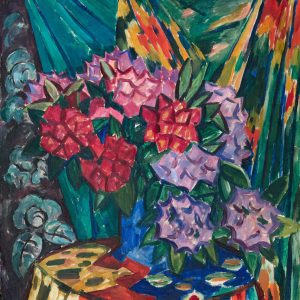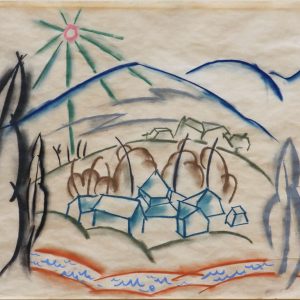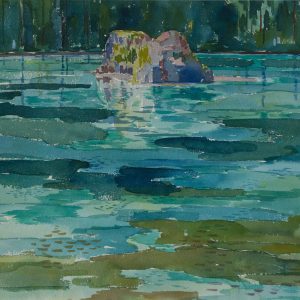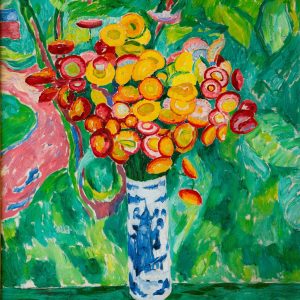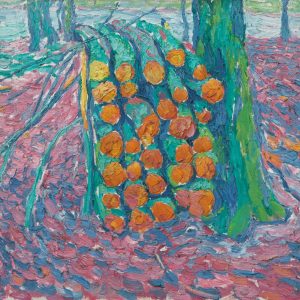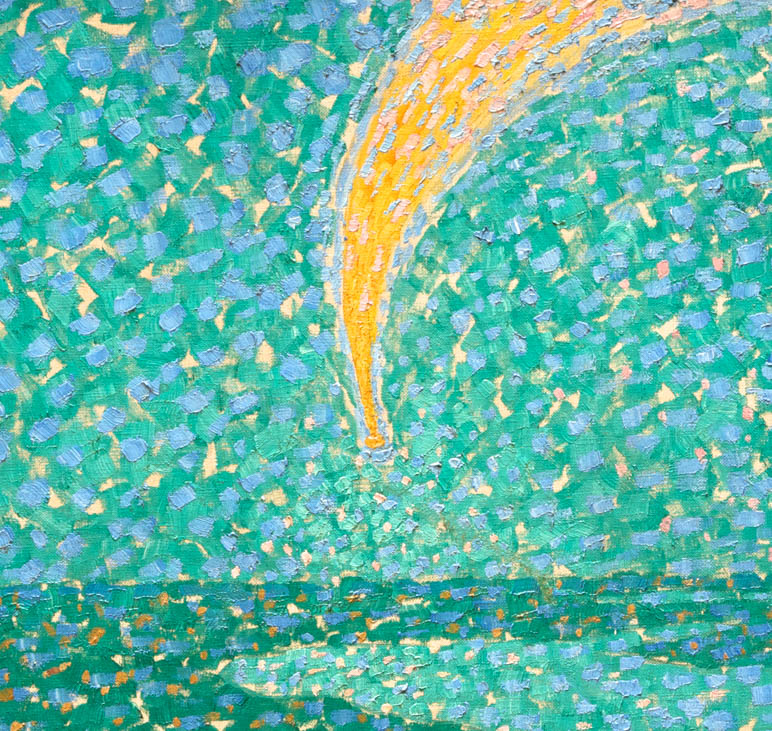
Walter Ophey
1882 Eupen – 1930 Dusseldorf
Purchase: If you would like to offer us a work of art by Walter Ophey, please send us a photo to info@galerie-paffrath.deWe will advise you on theselling price and in the event of a successful sale we will charge a commission of 10 %, including all costs. Alternatively, we will purchase your artwork directly against immediate payment.
Short information about the artist
Next to August Macke and Heinrich Nauen, the 1882 Born in Eupen, Walter Ophey is one of the main representatives of expressionism in the Rhineland.
Kunstwerke im Angebot
Verkaufte Kunstwerke
More information about the artist
Next to August Macke and Heinrich Nauen, the 1882 Born in Eupen, Walter Ophey is one of the main representatives of expressionism in the Rhineland.
The Sonderbund
From 1906 Walter Ophey began exhibiting his works and joined a number of artists’ associations. In 1908, together with the Düsseldorf painters Julius Bretz, Max Clarenbach, August Deusser and Wilhelm Schmurr, he founded the group of the “Sonderbund” (Sonderbund Westdeutscher Kunstfreunde und Künstler), which in the following years developed into one of the most important exhibition movements of modernism in Germany. The Sonderbund wanted to replace academic art with modern art in the Rhineland. At the exhibitions, French painting was exhibited on a larger scale in the Rhineland for the first time. Works by Ophey were always represented as well as in the German pavilion at the 1910 World’s Fair in Brussels.
Paris
Paris In 1910 Walter Ophey travels to Italy. In the autumn of the following year he made his way to Paris, which made a lasting impression on him. In the surviving graphics in the Museum Kunstpalast and in the letters to his fiancée Dotty (Bernhardine) Bornemann, Ophey describes the atmosphere of the city: “You see things on the street here, beautiful to scream, imagine a street star with five rays, inside a stone one Triumphal arch. The horses (weigh) in the midst of the maddening crowd of dust and electric lights, rolling cars. […] Paris is enormous, mightier than the sea, that’s how life roars and rushes through the canals, that’s what I call the streets with the giant houses. […] I sit high up on the electr. Omnibus and see the automobiles and cabs and the endless wide street, park facilities to the left and right, at the end of the Louvre. Paris stinks, Paris smells, a wedding car came out of the church, people mocked and whistled, everything is pale and decadent and lives in wild marriage; the impression of the grandiose and hellish, Paris is a large puddle, sulfuric acid in which salt is poured, it boils and roars like a thousand volcanoes.” Walter Ophey lived not far from the famous artist café “Le Dome”, in the Boulevard Montparnasse 135 near the Jardin du Luxembourg. In addition to the painter Alfred Mez from Freiburg, Ophey meets Richard Bloos, who has been in Paris since 1906: “I visited Richard Bloos; he lives in a huge house with a few hundred rooms. I knocked and he was lying in his bed surrounded by old junk and beautiful, curious furniture. He is extremely hardworking and he asserts himself in Paris. […] Montparnasse is the artistic center of the world, an incredible number of artists live here; It is a pity that I did not see Paris 10 years ago, I would have learned more here in one year than in Ddorf in 10 years.” In addition to the artist friendships, he visits the major museums and the galleries of Vollard, Sagot and Bernheim Jeune, which are exhibited by Cézanne, Gauguin, Manet, Monet, Renoir and Signac. In the previous weeks of his stay, Ophey is constantly out and about in the city, visiting horse races, theater performances, cafes, squares, parks and Versailles. Paris impresses him so much that he takes Düsseldorf and his skills hard. Even Berlin, where he exhibited a year later, is losing its luster for him in contrast to Paris. His friends in Paris also see his judgment of Düsseldorf art, which he feels as backward, with regard to modernism in Paris, which leads to the founding and changes of artist associations.
The Young Rhineland
In 1919, Ophey becomes a member of the artist association “The Young Rhineland”, which he has co-founded in Düsseldorf in the same year. He has a close friendship with Gerd Wollheim and the Progressive Cologne Otto Freundlich. After 1919 he achieved his breakthrough with paintings such as “Sauerland”, “Helles Dorf” and “Dorfkirche”, which identify him as an independent main representative of German Expressionism. Even during this peak phase, the colors always remain differentiated and do not become striking. There are points of contact and differences to the New Objectivity and the Italian Pittura Metafisica, but Ophey develops his own style, which contains something romantic and sacred.
Drawings
For Walter Ophey, like photography, his drawings are an approximation of world experience and appropriation. “I am a painter and go a lot with the sketchbook about the country and draw all kinds of things, such as mountains, telegraph poles, people, ships, rivers, railway bridges, old cities and factories and almost all objects there are. To be on tour like this is wonderful. I spin myself into the big box of wonder that is called the world, and bring the big shapes into my own little box. ”(Walter Ophey) His drawings are unique and represent a unique selling point. They cannot be assigned to any trend . Walter Ophey himself remarked in 1927: “Nothing is decorative in these sheets, they are just as little expressionistic, impressionistic, and factual.” He began with his linear chalk drawings as early as 1910 and continued developing them into the twenties.
Painting
Ophthey’s picturesque work develops from symbolist beginnings to neo-impressionism and then reaches expressionist stylet tendencies. Although Opheys painting is more and more of the reality in the course of his work, the nature was always the starting point of its abstraction.
